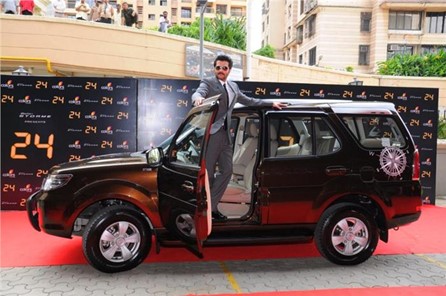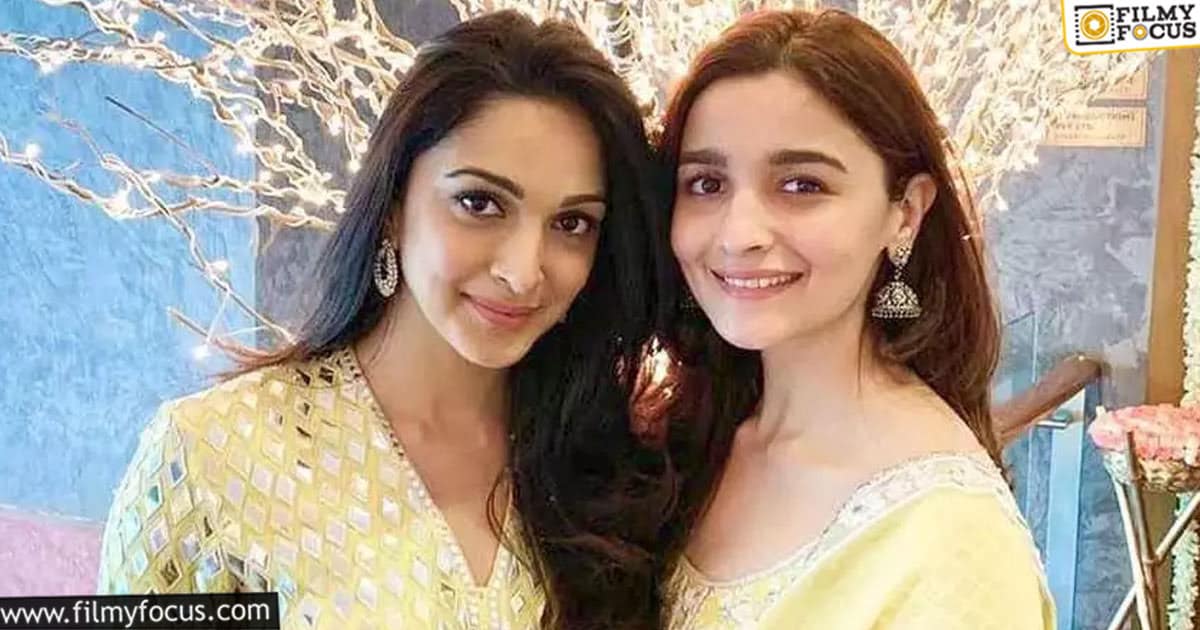IN THE BEGINNING, THERE WAS CLOTHING
The very first black and white television advertisement in India was aired on January 1, 1976 (some sources say 1978) and it was for Gwalior Suitings garments. Unfortunately, the footage is not available. However, this is not true of the first colour advertisement. The colour spot, which lasted a full 100 seconds, is highly reminiscent of a Bond parody. It concentrates everything you might think of in connection with an action movie (in this case, an ad) - knife throwing, leopard, python, swords, shooting, murder, kidnapping, helicopter, sensuality, suspense, speedboat. It would probably make Agent 007's own chin drop:
Video: Bombay Dyeing
Many Indian commercials today are in a similar "cinematic" style. And how could they not be, India is the centre of a lucrative film industry and the style of Bollywood musicals is reflected in many of the ads. Yet, one can see two directions in which the ads in India are going - on the one hand, they are depictions of the modern Indian world, which is in many ways not dissimilar to our Western world, and on the other hand, there is no shortage of stories full of deities, marriages and other traditions.
Brands in India rely on effective storytelling that aims to evoke emotions from the audience. Compared to American ads, which are direct, to the point and specific about what to expect from a company, India uses more creative language. The ads focus on descriptions rather than concrete facts, so the Indian viewer often has to read between the lines.
The golden era of television advertising in India began when classic commercials like Cadbury's Dairy Milk, Maggi, Liril, Bajaj, NDDB Doodh Doodh, Dhara Jilebi, Pepsi Dil Maange More, Fevicol Fishermen, Maruti Service Station, Coca-Cola Thanda Matlab, Naukri Hari Sadu were launched in the Indian market.
Of these historic ads, the Ogilvy & Mather spot that won countless viewers' hearts in the 1990s and made model Shimona Rashi famous, besides Dairy Milk chocolate, is definitely worth mentioning. In this ad, Rashi, dressed in floral attire, watches a cricket match from the stands with a Dairy Milk bar in her hand. When her friend, a cricketer, hits a winning six, Rashi runs past the security guards and dances joyfully on the field. Meanwhile, the theme song "Asli swaad zindagi ka", which has become famous in India, plays in the background - as does Shimona Rashi, who has come to be known as the Cadbury girl.
Video: Cadbury Dairy Milk
In 2021, agency Ogilvy took the bold step of using an interesting gender-swapping element in the remake of this iconic ad.
Video: Cadbury Dairy Milk Wishes
And there's one more firsts to mention. This is the Indian TV commercial that was the first to win a global award and take home the Silver Lion at the Cannes Lions - Ericsson's 'One Black Coffee Please' (1996). Decent humour and the element of surprise worked then, works now and will work in the future. And not only in India.
Video: Ericsson - One Black Coffee Please
CHANGES IN AUDIENCE PREFERENCES
Indian television allows 12 minutes of advertising per hour. The advertising industry is unhappy and claims that it's not enough. But more and more viewers are boredly switching channels during commercial breaks. And a relatively large proportion of young people in India also prefer to watch films on the internet, where there are fewer advertisements. So brands and marketers are constantly looking for new ways to draw attention to their product. One solution has worked well in India - promoting the product in shows and movies.
The thriller spy series 24, an Indian adaptation of the American series 24 Hours, has been hugely successful in this regard. The series, which aired on Viacom 18 from 2013-2016, had exactly 24 episodes. The main sponsor was Tata Motors and hence the heroes drove a Tata Safari Storme SUV model. As a special promotional gimmick, Tata produced a limited edition of this model with the signature of lead actor Anil Kapoor. The demand was incredible and this strategy reflected in high sales figures. It was a huge success for Tata Motors.

THE CELEBRITIES, AGAIN
Apparently, the combination of product + celebrity + emotion works as a formula for optimal content in India. In India, celebrities are practically synonymous with divinity. All Indians aspire to be like them. Thus, celebrities can quite easily influence and dazzle audiences with their lives full of glamour - and the products they have signed up to endorse.
Every year, several new brands emerge in the Indian market. To reach out to the Indian public and build instant brand awareness, they make celebrities their ambassadors. Between 2007 and 2021, India's branding through celebrities achieved a steady 10% compound annual growth rate.
According to statista.com, the celebrity who held the top spot in terms of number of TV commercials in 2021 was Akshay Kumar, one of India's leading actors. He appeared in 11% of all TV ads featuring film celebrities. British Indian-origin actress Alia Bhatt came second, and Indian actress Kiara Advani came third. Both had 5% each.
Video: An ad with Akshay Kumar
 Alia Bhatt & Kiara Advani
Alia Bhatt & Kiara AdvaniApart from Bollywood celebrities, other big names - sports celebrities, YouTube stars and many more - also appear in the ads. Celebrities in India today probably earn much more from advertising than they do in films. For example, Indian actor and presenter Shah Rukh Khan earned $165 million through advertising in 2014. And it didn't take long for him to be surpassed by Indian cricketer Virat Kohli, who earned a whopping $237.7 million through brand promotion.
A FORTUNE IN SECONDS
Brand endorsement is a dream job in India. Indian celebrities - just like in movies - can get a small fortune for their performance. But in advertising, they literally only need a few seconds to earn that fee. How much does such a Bollywood star earn through advertising?
For example, Akshay Kumar, who endorses a number of brands (Honda, Policy Bazaar, Harpic, Dollar, Tata Motors, Revitah H and Cardekho), charges 8-10 million rupees for shooting one commercial, or 2.6 Czech crowns in conversion. Not far behind is Priyanka Chopra (Bumble, Garnier, Appy Fizz, Colgate, Schmitten and Pantete brands), whose bill goes up to 4 to 10 million rupees after each commercial shoot. A little less will land in the bank account of Aaamir Khan (PhonePe, TatSky, Datsun, Vedantu and Vivo brands), who gets 5 to 7 million rupees per shoot. Other celebrities with fat fees for a few seconds of commercials include Shah Rukh Khan, Deepika Padukone, Amitabh Bachchan and others.
THE STORY IS HALF THE SUCCESS
It's true. Celebrities are expensive. When there is no celebrity, you need a story. If the finances are there for the celebrity and on top of that there is a story, you have practically won. Advertisers in India don't try to make viewers remember the technical specifications of their products. They want consumers to experience emotions first and foremost when thinking about or interacting with the products. The combination of story and humour is also a proven recipe for success.
Video: Titan Raga
PROMOTING BURGERS IN A COUNTRY WHERE THE COW IS SACRED IS NO EASY TASK
McDonald's knows that adapting to the local culture is not easy. Although it has successfully opened and operated restaurants in many countries where it has had to adapt to local customs and dietary preferences, India has been a real challenge. India is home to Hindus who do not eat beef, Muslims who do not eat pork, and a large number of vegetarians who do not eat any animal products at all. The Chicago-based company has been planning its entry into India for four years. It opened its first restaurants in Mumbai and Delhi in 1996 and didn't see much success at first. The burgers, made from mutton instead of beef, were dry, and the Indian potato fries were soggy because the local potatoes contain a lot of water. The company didn’t give up. It changed the mutton to chicken, solved the fries problem, divided the operation into vegetarian and non-vegetarian, and based its TV advertising on low prices. This strategy worked well and the company eventually succeeded even in predominantly vegetarian India.
Video: McDonald's
THE WORLD'S LARGEST TV MARKET
Globally, India is the second largest TV market. With 836 million households (Broadcast Audience Research Council India, 2021) watching 914 billion minutes per week, individuals spend an average of 3 hours and 42 minutes in front of the television. An average of 762 million viewers watch television weekly. Television advertising has seen a steady increase, as confirmed by BARC's THINK Council report for 2021. According to the report, TV advertising volumes in India in Q1 2021 were a full 20% higher than in 2020, and the number of advertisers has also increased significantly.
In terms of sectors, the FMCG sector clearly leads in advertising volumes, followed by e-commerce, building and industrial materials, automotive, and services by a wide margin. Hindustan Unilever Lt, Reckit Benckiser Group, Procter & Gamble, Cadburys India Ltd, Godrej Group, ITC Ltd, Colgate Palmolive India Ltd, Pepsi Foods (G) topped the list of major advertisers in 2021. The top ten advertisers accounted for 35% of the total TV advertising volume.
The average duration of TV advertisements in 2021 was more or less the same as in the previous two years - about 20 seconds. According to statista.com, traditional TV ad spending is estimated to reach $4.82 billion this year.
NEXT STOP WILL BE...
The next country on our round-the-world tour of TV advertising will be a country where you won't see ads on TV at Christmas, Easter and on Anzac Day because they are banned. Where, thanks to the low cost of airtime, almost anyone can afford a commercial. The land where many scenes from the iconic Lord of the Rings were filmed. Pack your bags, New Zealand awaits!
Sources: dr-simone-rappel.de, excellentpublicity.com, businessinsider.in, barcindia.co.in, lokesh-vishwakarma,themediaant.com, theprint.in, muse.jhu.edu, thenewsmen.co.in, statista.com



